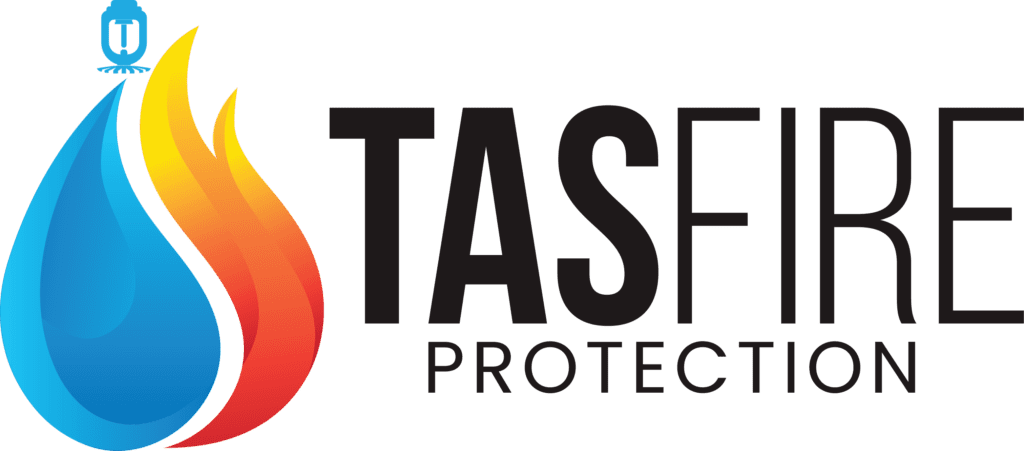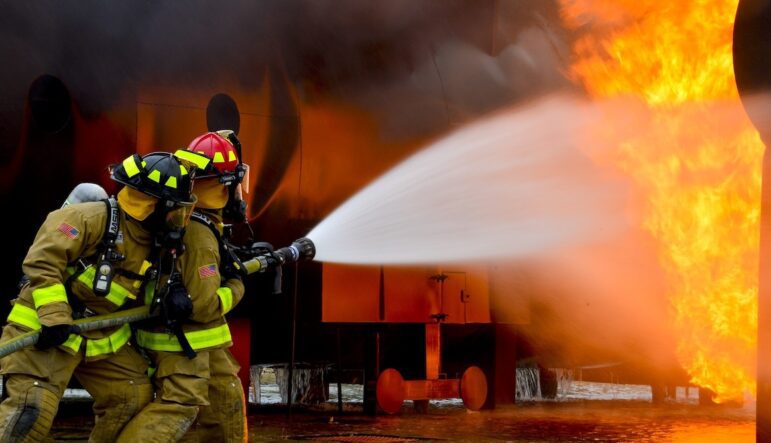Major Causes of Industrial Fires and Explosions…
Every year, billions of dollars are lost due to industrial explosions and fires. On average, there are 37,000 fires yearly in buildings of all shapes and sizes, as the National Fire Protection Association reported. There were 18 deaths, 279 injuries, and $1 billion in property damage due to these incidents.
Any location with both heating sources and combustible materials presents a fire hazard. If not handled and stored correctly, many materials used in industrial settings have the potential to explode or catch fire. While every industry presents its own set of specific fire hazards, all industrial complexes and manufacturing facilities face the same overarching challenges that put lives and property at risk. Both carelessness and ignorance can lead to such catastrophes. Understanding the root causes of such threats is crucial before attempting to mitigate them.
Fragmentary Solids Capable of Ignition
Even materials that aren’t flammable when cut up into big chunks can become dangerous if they’re reduced to dust. In numerous sectors, including metalworking, manufacturing, woodworking, pharmaceutical, and chemical production, dust is the leading cause of explosions and fires. Both minor fires that seldom make the news and significant explosions are possible outcomes. When a large amount of dust explodes, the initial blast destabilizes the dust and sends it into the air. The explosion that follows the dust cloud igniting is devastating. The Imperial Sugar explosion is an excellent example of a large explosion.
Combustible fires and explosions are typically caused by dust. Keeping the dust levels from rising to unhealthy levels is your only option. To what end are you aiming this?By maintaining a strict cleaning schedule. The Proper Method for Gathering Flammable Dust.
These procedures are applicable in any setting:
Select risk-free cleaning supplies. If you fail to do so, you may face legal action from the AHJ, insurance companies, OSHA, and other relevant authorities. Follow the most current rules, guidelines, and suggestions. Get machinery that is suitable for your building’s needs.
Labor in the Heat
There is a risk of fire from torch cutting and welding, as well as any other nearby activities. Anything that melts or sparks at over 10,000 degrees Fahrenheit has the potential to travel further than 35 feet. This is the primary reason a welder’s torch caused $100 million in damage during the California Pier fire in 2014. Burns was sustained by welders in North Carolina when sparks ignited wood dust inside a silo.
Preventing hot work accidents can be done by
Not doing any work that requires working in extreme heat.
Educate your staff about the risks associated with working in high temperatures and how to use protective gear properly.
Remove any flammable or combustible elements, such as gases, dust, or liquids, from the area.
Make sure there’s a safety team to keep an eye on things.
Substances in Flames: Flammable Gases and Liquids
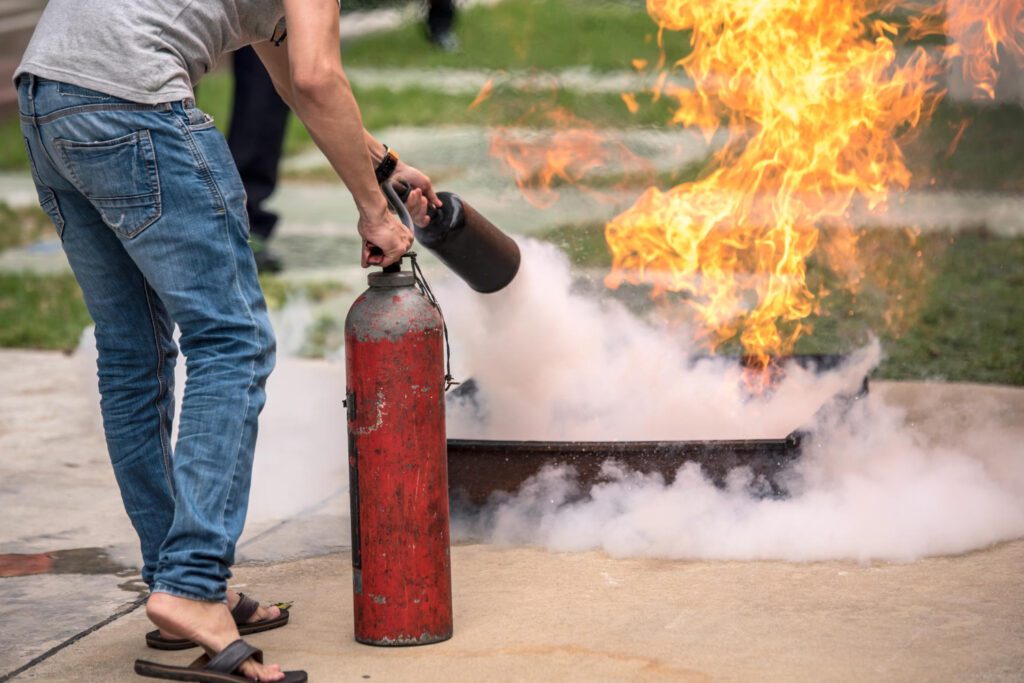
Chemical factory fires are particularly catastrophic. Six persons were killed, and fifty were injured in a power plant explosion in Middletown, Connecticut, in 2010. During the investigations, OSHA found safety violations and determined they were “willful.” Consequently, fines totaling $16.6 million were imposed.
To what extent may fire caused by combustible liquids and gases be avoided?
Document all liquids in your building by filling out a safety data sheet.
Keep the combustible liquids in a safe place.
You should eliminate all potential ignition sources when actively trying to start a fire.
Provide safety gear to workers exposed to hazardous substances like liquids and gases.
You may also like to read:
- How to Install Security Cameras at Home?
- How to Make a Home Fire Escape Plan?
- How Do I Know If I Need a Fire Suppression System?
- Do Fire Extinguishers Have an Expiry Date?
Appliances and Machines
Major industrial fires can be caused by faulty machinery and equipment. The two most common causes of injury are prolonged exposure to high temperatures at work and improperly installed, operated, or maintained heating systems. Furthermore, any friction on mechanical apparatus poses a risk of fire. Proper cleaning, maintenance, and lubrication can mitigate these dangers.
Three types of measures can be taken to lessen the likelihood of an explosion or fire being caused by faulty machinery or equipment:
Increased facility-wide awareness has been achieved through training to recognize potential dangers.
Maintenance entails keeping the space around tools and machinery tidy at all times.
All the equipment in your building should be maintained per the manufacturer’s instructions.
Risks Associated with Electricity
This category falls into this category with exposed wiring, outdated electrical equipment, static electricity, and overloaded circuits.
A spark from one of these dangers could set flammable gases, liquids, or particles on fire.
Prevention:
Never force anything electrical beyond its safe limits.
Please do not leave a device plugged in when it is not in use.
Please don’t ever permanently rely on an extension cord.
Antistatic tools should be used wherever OSHA or the NFPA specifies them.
Keep up with a consistent cleaning schedule.
Put in place a reporting system where all employees can anonymously report risks.
Knowing the best prevention methods will help keep you, your facility, and your employees safe from industrial explosions and fires, even if the causes cannot be eradicated.
Housekeeping Carelessness
A spotless workplace reduces the risk of accidents. A clean and orderly environment reduces the risk of fire and other accidents related to tripping and falling. It’s essential to make the following a regular part of your life:
Pick up the slack and clean up the crumbs, hair, and debris.
Put trash that could catch fire in containers with tight lids.
Remove any waste and empty boxes from the area around machines, stoves, heaters, and other machinery.
Clean with products that won’t catch fire.
The use of unsuitable materials should be avoided.
Avoid blocking fire exits or fire sprinklers with piles of stuff.
Smoking
Many businesses have instituted zero-tolerance policies on smoking. Ensure sufficient ashtrays or butt cans and those smoking restrictions are stated and adhered to if smoking is still permitted in some places.
Lack of Employee Training
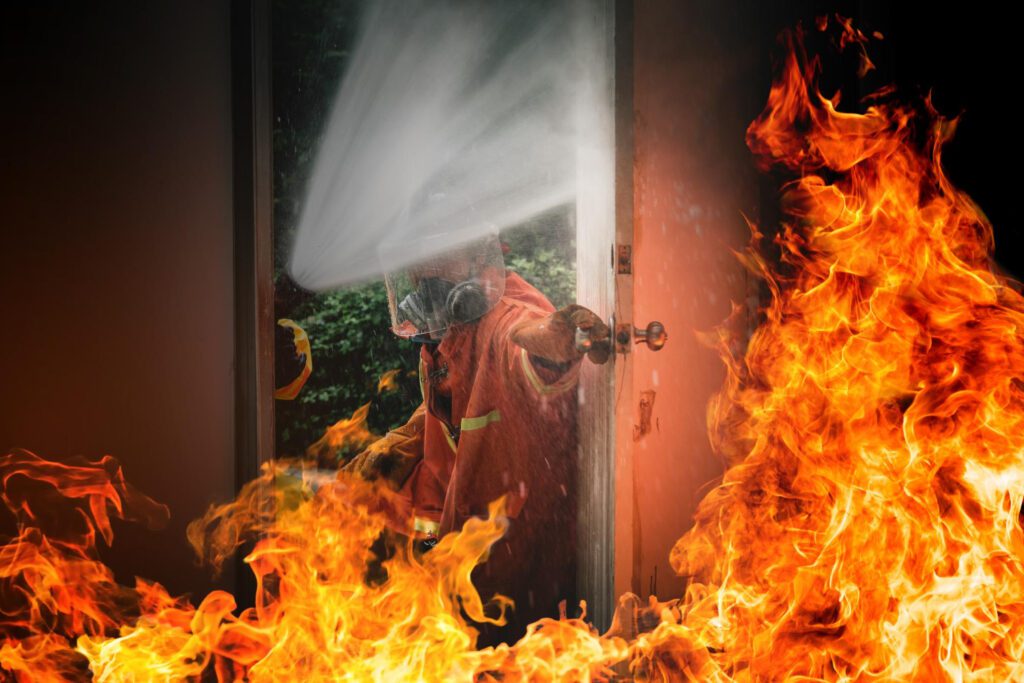
Accidents are inevitable and cannot be prevented. A perfectly functional piece of machinery could suddenly catch fire, or a previously inflammable substance could develop a new propensity for ignition. While some fires may be the result of carelessness on the part of others, it is still important to ensure that all employees have the knowledge and skills they need to put out and prevent future fires. This helps avoid careless blunders that could have dire consequences, such as covering the vents of electrical equipment that need fresh air to function properly or storing the materials incorrectly. Of course, when training employees, it’s crucial to ensure they understand the differences between different types of combustibles.
Arson
45% of all significant fires in the UK (to houses and businesses) were assumed to be caused by arson, which may sound paranoid or even ludicrous as a potential issue. As a result, it’s crucial to check that you’ve accurately determined your vulnerabilities and taken adequate measures to protect your site from external vandals.
Those with keys to the building need to be especially vigilant about security, and nightly guards may be a worthwhile investment. There should be locks on all doors and windows, and perhaps surveillance cameras in public spaces. Last but not least, everyone working there needs to keep an eye out for any signs of suspicious activity and check that all visitors have proper identification.
Lack of resources and equipment in place
It may sound obvious, but you’d be astonished at how many companies forget to do this. Prioritizing prevention over response requires allocating funds to measures shown to reduce risk to individuals. Both smoke detectors and fire alarms must be installed, connected to power, and operational.
We’ve stressed the significance of having fully operational fire extinguishers several times throughout this piece, but it’s worth emphasizing one more. Without the right gear, a fire can spread quickly to an unsafe level before you or your staff notice it, and you’ll be in a far more precarious position even once you do. Everybody is aware of how critical it is to always have working smoke detectors in the house; the same is true for the workplace.
To Sum Up
Fire can happen anytime, at any instance. It is a basic necessity to feel protected and safe. We at Tasfire work in a very multidimensional manner with unmatched equipment and uncompromizable quality. These hazards can be challenging but not impossible to avoid. With care and precision, any hazardous situation can be avoided.
FAQs
What are examples of materials that can be combustible dust hazards?
Dust can be acquired for use in the workplace or produced naturally as a byproduct of various procedures.
Ingredients from the agricultural sector, such as egg whites, powdered milk, cornstarch, sugar, wheat, grain, potato, rice, etc.
a wide variety of metals including aluminum, bronze, magnesium, zinc, etc.
coal, sulphur, and other chemical dust.
pharmaceuticals \pesticides \rubber \wood \textiles \plastics
Combustible dust can form from a wide variety of other substances as well.
What is combustible dust?
Any finely divided solid particles that can disperse in the air, catch fire, and explode when exposed to an ignition source are considered combustible dust. Materials in the form of powders, flakes, fines, fibers, etc. are all considered combustible dust.
Examples of combustible dust include:
Mostly inorganic substances that don’t melt (such as sugar, flour, grain, wood, etc.)
Compounds containing carbon (e.g., charcoal, soot)
Fibres for textiles (e.g., cotton)
A wide variety of metallic and nonmetallic inorganic substances.
The correct particle size and concentration can cause combustion or explosion in materials that are not “usually” flammable.
So, it’s important to look into any endeavor that kicks up dust to see if it poses a fire hazard. The rafters, roofs, suspended ceilings, ducts, fissures, dust collectors, and other equipment can all become dust accumulators. Under the right conditions, an enormous explosion can happen if the dust is stirred up. Even a minimal accumulation of dust can be disastrous.
Contact Us (905-870-7779) for a Free Consultation!
—
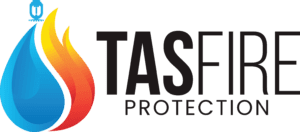
About TAS Fire Protection
TAS Fire Protection offers comprehensive and cutting-edge fire, security, and electrical services to clients with residential, commercial, industrial, or high-rise properties. Our team of highly skilled professionals has years of experience in installing, maintaining, and inspecting fire, security, and electrical systems and equipment.
> Learn More
